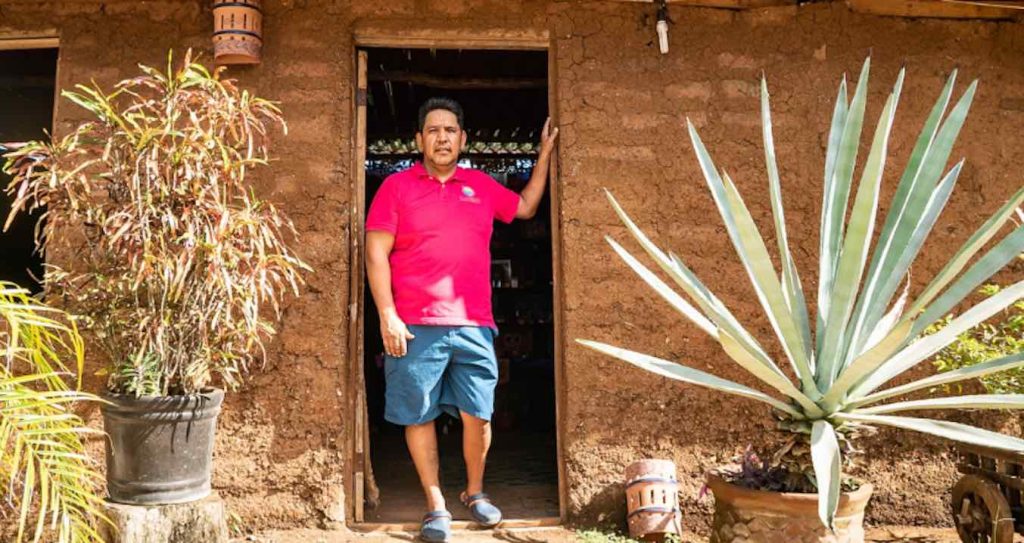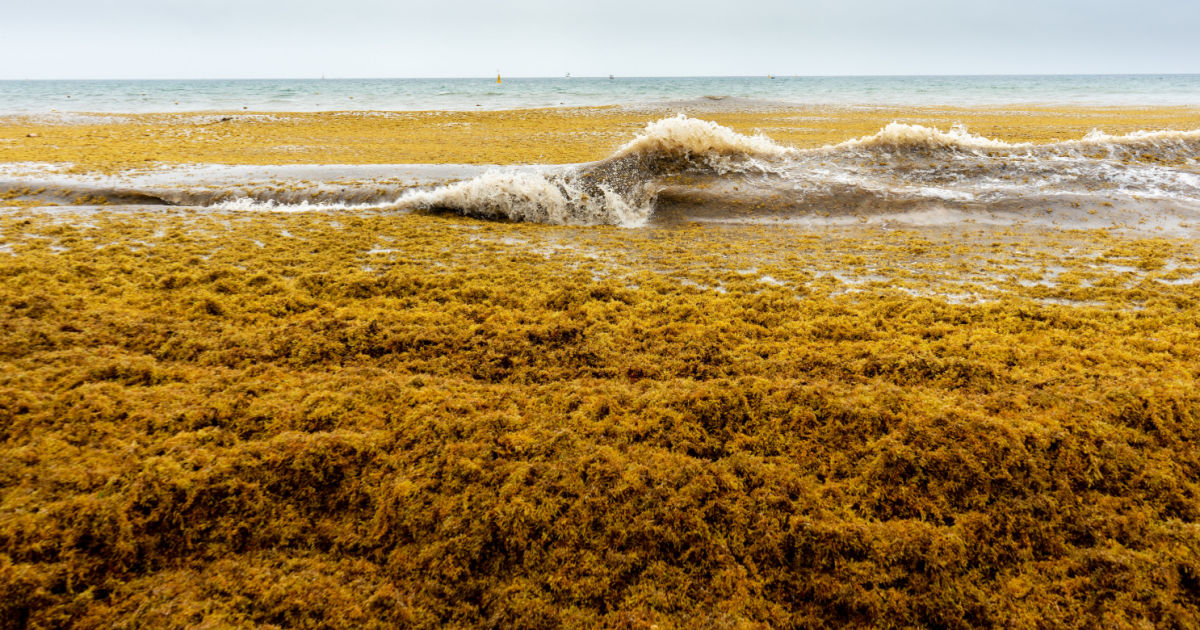In a remarkable display of innovation and environmental consciousness, a gardener has found a groundbreaking solution to two pressing issues: beached seaweed and sustainable construction. By harnessing the potential of seaweed as a building material, Mexican native Omar de Jesús Vazquez Sánchez is paving the way for a greener and more sustainable future. Through his pioneering efforts, piles of beached seaweed are transformed into durable bricks that can be used for various construction purposes, reducing the environmental impact of traditional building materials.
The Seaweed Solution
Beached seaweed is common in coastal areas, often considered a nuisance and an eyesore. With Sargassum seaweed specifically, the government has been forced to clear away over 40,000 tons of the stuff. However, Omar recognized the hidden potential in this abundant resource early on and turned a smelly problem into a sustainable solution. Drawing inspiration from nature’s resilience, Omar discovered that seaweed could be transformed into a valuable building material. By firing the Sargassum seaweed up in a kiln, Omar has been able to make regulation-passing adobe building blocks for housing.1

Omar had immigrated from poverty to the United States to be a child laborer. A former substance abuser, Omar struggled to find his dream life away from home, so returned to Mexico to pursue his “Mexican dream.” When he stumbled upon a massive project made up of working on something nobody wanted to work with, he saw a business opportunity as a skilled laborer. However, there was also a deeper understanding of having to deal with someone nobody wanted to work with, as his more difficult years with abuse had taught him. But it is clear to see that both Omar and sargassum seaweed have much more to offer.
Read: Woman Finds Way To Recycle Plastic Into Bricks That Are Stronger Than Concrete
Sustainable Construction Benefits
Named “Sargablocks” after the seaweed, the bricks offer several notable benefits for sustainable construction. Firstly, seaweed is an abundant and renewable resource that does not require extensive land use or harmful extraction methods. Unlike traditional building materials such as concrete or bricks, seaweed cultivation has a minimal carbon footprint and reduces dependence on non-renewable resources.2 The bricks contain 40% Sargassum, the main building block of his…well, building blocks, and Omar and his team have already gone through 6,000 tons of it in the last two years.
.jpg?auto=webp)
The seaweed bricks have already proved their worth, as they have been used in structures across Jalisco and to make 14 “Casa Angelitas” for families in need. Seaweed bricks also exhibit high durability, as they have a lifespan of roughly 120 years. Sargablocks are a reliable and safe choice for construction; their strength and resilience contribute to the longevity of structures, reducing the need for frequent renovations and minimizing construction waste. The United Nations has praised Omar for his “stroke of brilliance” and is highlighting the sustainable bricks in their Development Program.
Environmental Impact
Using naturally-occurring materials to make sustainable housing isn’t a new concept – even when it comes to inconvenient or irksome materials. While recyclable materials have been used in construction for some time now, a community in the Philippines has found a way to make bricks out of ash from volcanic eruptions.3
The utilization of seaweed as a building material has far-reaching environmental benefits. One significant advantage is the reduction of marine pollution. By collecting and processing beached seaweed, this visionary gardener tackles a common problem and prevents the release of harmful compounds into the ocean. This approach helps preserve marine ecosystems and contributes to the overall health of coastal areas.
Read: These Eye-Catching Bricks Are Made from Textile Waste
.jpg?auto=webp)
Additionally, seaweed cultivation for construction purposes promotes carbon sequestration. Seaweeds are known to absorb large amounts of carbon dioxide from the atmosphere during their growth. By incorporating seaweed bricks into sustainable construction practices, we can hypothetically offset carbon emissions and mitigate climate change effects.
The innovative efforts of Omar Sanchez have showcased the transformative potential of beached seaweed as a building material. By converting this underutilized, smelly resource into durable bricks, sustainable construction practices can be embraced on a larger scale. The numerous benefits sargassum seaweed has shown to have, including reducing environmental impacts of construction, improved sustainability, and enhanced building durability, highlight Omar’s brilliance and our need to look deeper than the surface to see the potential in people and everyday life. As we continue to seek eco-friendly alternatives, the vision of this gardener serves as an inspiration for a more sustainable future.
Keep Reading: The destructive blob of seaweed that invaded Florida
Sources
- “Visionary Gardener Turns Piles of Beached Seaweed Into Bricks for Sustainable Construction.” Good News Network. Andy Corbley. April 24, 2023.
- “Gardener Turns Pile of Beached Seaweed into Sustainable Building Blocks.” One Green Planet. Nicholas Vincent. April 2023.
- “Disaster Breeds Invention: Philippine Residents Use Volcanic Ash to Repair Damaged Buildings.” Good News Network. Andy Corbley, January 2020.

